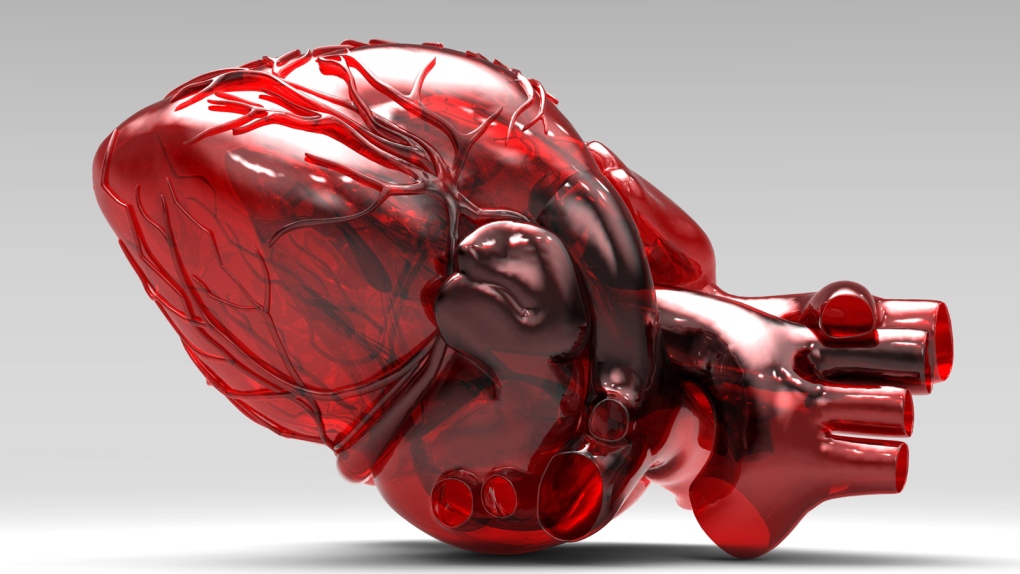Cardiovascular
1 in 3 Canadians don’t know the difference between heart attack and cardiac arrest, poll finds
Despite 50 per cent of Canadians having been affected by heart disease and stroke in some capacity according to the Heart and Stroke Foundation, a much smaller proportion understand critical information related to the health issue.
This is according to a new Heart and Stroke poll which also found that one in three Canadians do not understand the difference between cardiac arrest and a heart attack, nor do they know that men and women exhibit different signs when having a heart attack.
“The most troubling [research finding], from my perspective, would be that a third of Canadians think that it’s difficult to recognize the signs of stroke if you’re not a trained healthcare professional,” Lesley James, Heart and Stroke spokesperson and director of health policy and systems, told CTVNews.ca. “The signs of stroke are easy to recognize and everyone needs to know that. It’s very important because stroke can happen to anyone at any age.”
The online poll conducted by Environics Research Group, asked 2,003 Canadian residents aged 18 and older about their understanding of heart conditions. The data was collected between May 29 and June 9, 2023.
KNOWING THE DIFFERENCE BETWEEN HEART CONDITIONS
While some might think the terms cardiac arrest and heart attack can be used interchangeably, they are in fact two different health conditions.
According to Heart and Stroke, cardiac arrest is when the heart suddenly and unexpectedly stops beating. Meanwhile, a heart attack is when the blood flow to the heart is slowed or blocked.
One in three Canadians don’t know that these are two different conditions, according to the survey.
“There hasn’t been enough education and awareness about the differences between the two. So that’s why we’re hoping to raise awareness and increase people’s understanding,” James said. “Both are medical emergencies and require immediate medical attention.”
A stroke on the other hand, is caused by a blockage in blood flow to the brain.
According to Dr. Robert Fahed, a neurologist at The Ottawa Hospital, heart attacks and strokes come as a result of the same underlying vascular risk factors, which include smoking, diabetes, cholesterol, hypertension, obesity and lack of physical exercise. Those factors cause the majority of strokes and heart attacks in Canada, Fahed told CTVNews.ca in an interview.
SIGNS OF HEART ATTACK ARE DIFFERENT FOR WOMEN
There is also a difference between how men and women show signs that they are having a heart attack, a fact one in three Canadians are unaware of.
“What we perceive as a heart attack are most likely the ones that happen in men. But women experience a heart attack differently—they may not have that true ‘Hollywood’ heart attack, where someone has chest pain and crushes their chest,” James said.
Instead, women may experience shortness of breath, pressure, or pain in the lower chest or abdomen, dizziness, upper back pressure or extreme fatigue.
Meanwhile, the poll revealed that these symptoms often go unrecognized for half of Canadian women, as the symptoms often don’t have the visible severity of men’s symptoms.
“What needs to happen in this regard is really raise awareness about what the signs of heart attack are, across both sexes,” James said.
As for why women experience different symptoms, Fahed has some ideas.
“We know that women’s physiology is slightly different, because women produce more estrogen, which have different effects on the heart and the vessels,” Fahed said. “So women can have heart attacks at a different age than men with a different severity, they can be more or less severe.”
Fahed adds that many women have the tendency to underestimate the seriousness of their own symptoms, resulting in the risk of irreversible damage, or even death.
“Women are often underrepresented in the stroke and heart attack studies and trials. And because of that, we do not have a clear understanding of all the underlying mechanisms. And there is probably a lot of work to do about this to develop appropriate drugs, medications and care for women who suffer from these diseases.”
LOW SURVIVAL RATE FOR CARDIAC ARREST OUTSIDE OF A HOSPITAL
According to Heart and Stroke, 90 per cent of people who go into cardiac arrest outside of a hospital, do not survive.
One in three Canadians are not aware of this fact, researchers said.
The poll also found that one in three Canadians think they should immediately drive someone suffering from a stroke to the hospital. This is incorrect, according to James.
“Driving someone to the hospital delays time when intervention could be used right there on the spot with an AED [automated external defibrillator], and with CPR,” James said.
Instead, if you see someone suddenly collapsing on the floor, Fahed says call 9-1-1 immediately.
“Without even waiting a single second,” Fahed said. “For heart arrest, heart attack and stroke, the sooner medical attention is called, the sooner the patients are cared for by appropriate health care workers to better the prognosis.”

